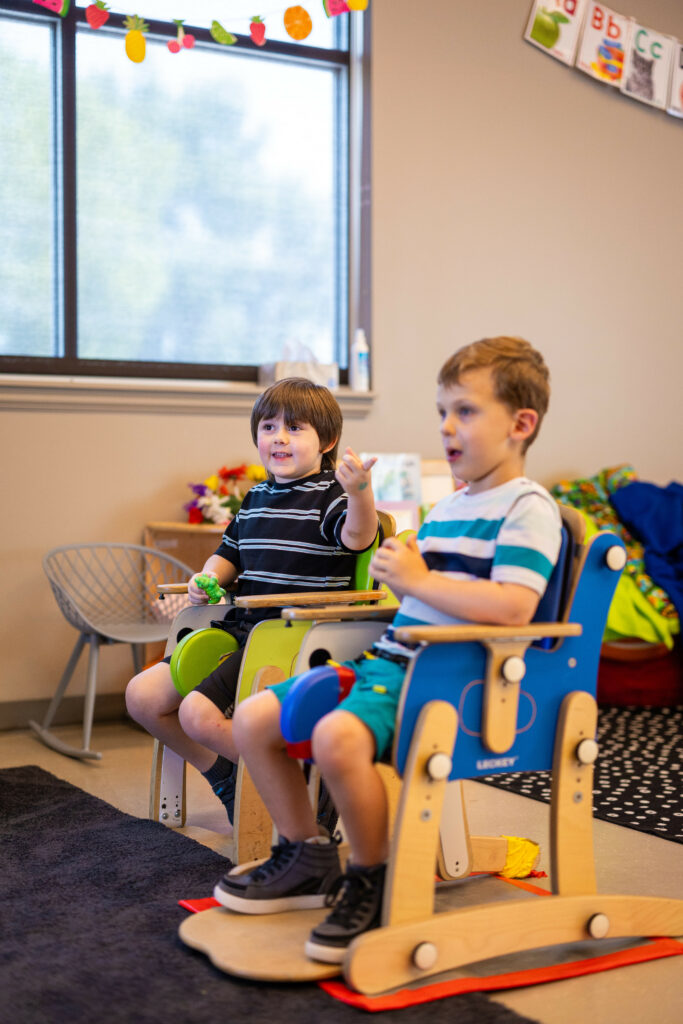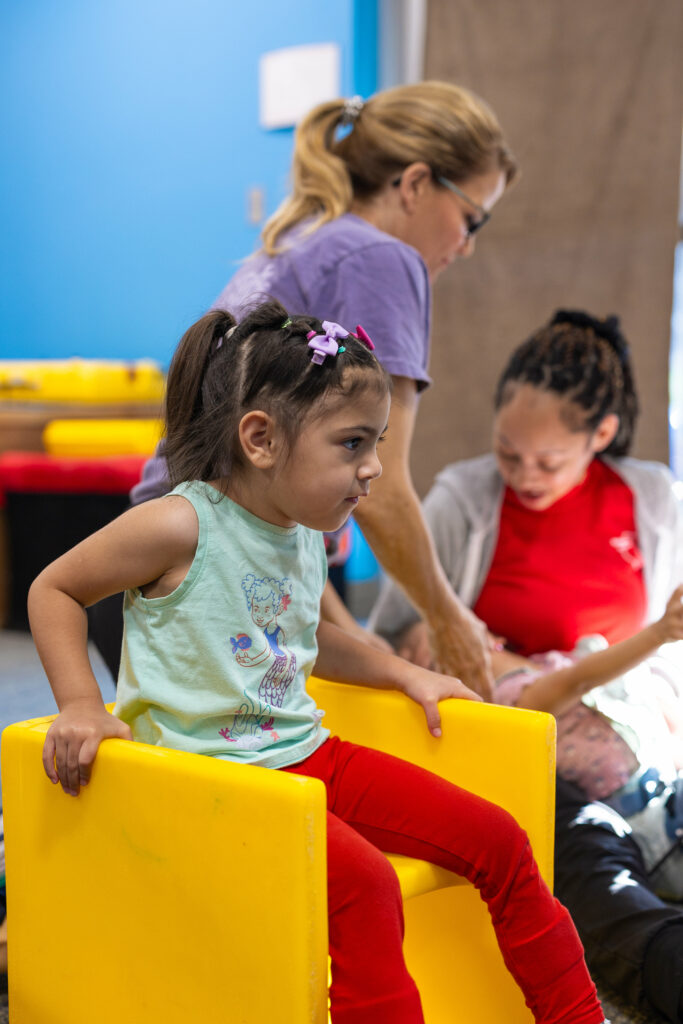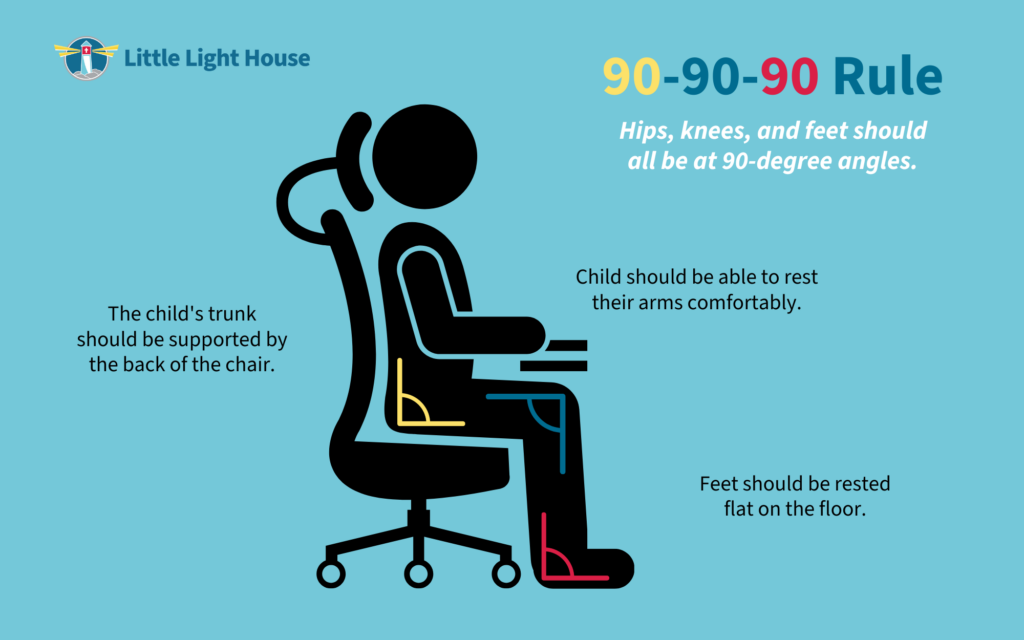

Think about your posture right now. How are you sitting? Are you slouched? Are you using your body or another object for support? If your chair is not adjustable, you may be crossing your legs to stabilize your body, resting your foot on another object, or leaning to one side.
When a child is expected to sit in a chair that doesn‘t fit their body, they are likely to lean, wiggle, slouch, and put their feet on things. They may quickly become uncomfortable, which results in them standing up or moving around during learning and mealtimes.
The chair fits the child when:
- The child’s ankles, knees, hips, and elbows are at 90-degree angles.
- There is a 1”-2” gap between the edge of the seat and the calf.
- The desk and chair height allow the child to rest their arms comfortably supported at the elbows.
- The back of the chair provides trunk support.
- The child’s feet are resting on the floor.

If adjustable seats are not available, you can adapt a seat to meet the child’s needs and create ideal foot and arm positioning. For example, if a child’s feet do not touch the ground, you can use a box as a footrest. If the chair is too deep, you can place a pillow behind the child’s back.
Remember! Children need opportunities to move throughout their day. Even with proper seating, allowing the child to move, wiggle, rock, bounce, and stand increases oxygen to the brain, enhances blood flow, and improves core strength. More movement = more focus!
For more seating ideas and adaptations, see the following handout!
